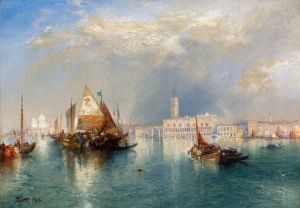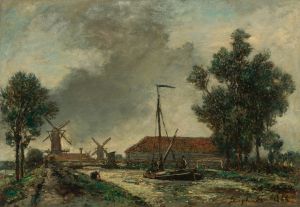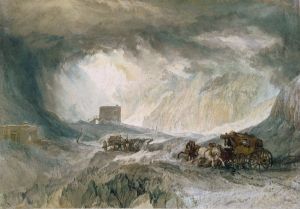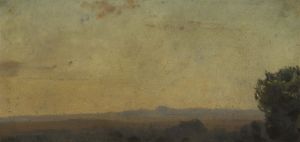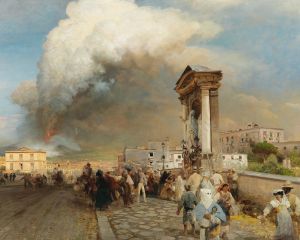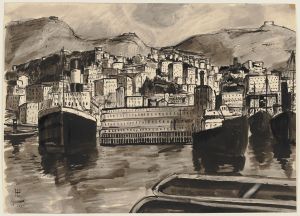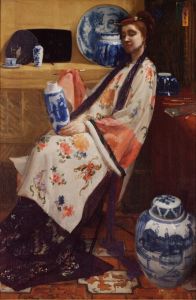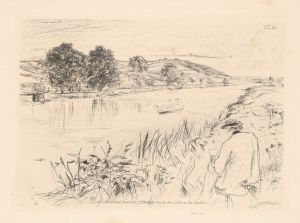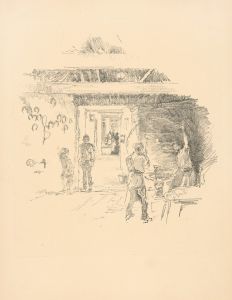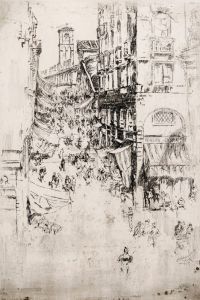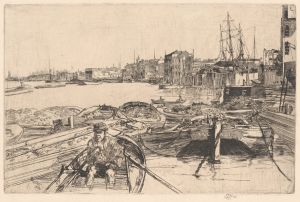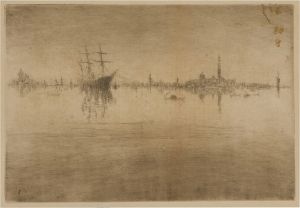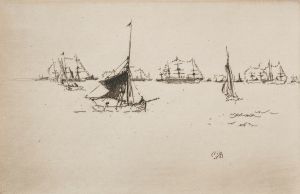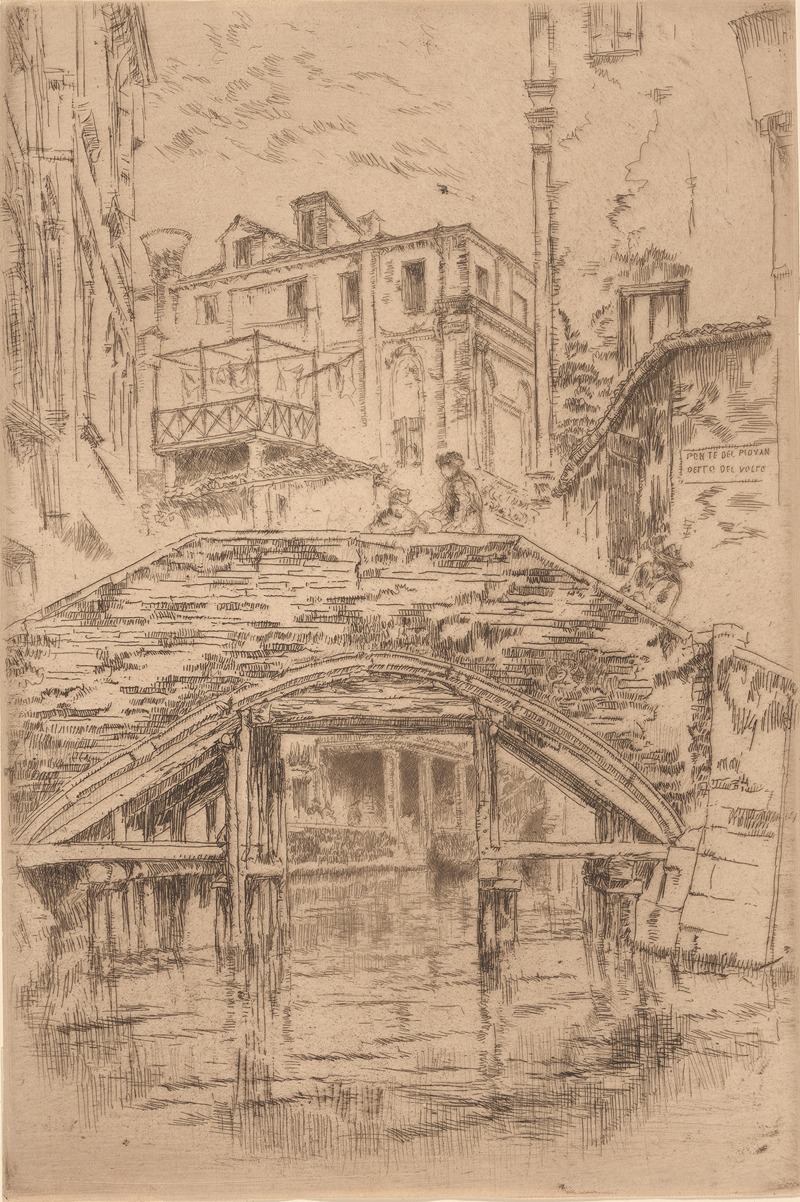
Ponte del Piovan
A hand-painted replica of James Abbott McNeill Whistler’s masterpiece Ponte del Piovan, meticulously crafted by professional artists to capture the true essence of the original. Each piece is created with museum-quality canvas and rare mineral pigments, carefully painted by experienced artists with delicate brushstrokes and rich, layered colors to perfectly recreate the texture of the original artwork. Unlike machine-printed reproductions, this hand-painted version brings the painting to life, infused with the artist’s emotions and skill in every stroke. Whether for personal collection or home decoration, it instantly elevates the artistic atmosphere of any space.
James Abbott McNeill Whistler was an American artist known for his paintings, etchings, and lithographs. He was a leading figure in the Aesthetic Movement, which emphasized the visual and sensual qualities of art and design over practical, moral, or narrative considerations. Whistler's work is characterized by his innovative use of color and his focus on the harmony of composition.
"Ponte del Piovan" is one of Whistler's works that reflects his interest in capturing the essence of a scene through subtle tonal variations and a keen eye for detail. While specific information about "Ponte del Piovan" is limited, it is known that Whistler spent a significant amount of time in Venice, where he produced a series of etchings and paintings. These works are celebrated for their atmospheric qualities and their ability to convey the unique light and architecture of the city.
Whistler arrived in Venice in 1879, following a financially and emotionally challenging period in his life. He was commissioned by the Fine Art Society of London to create a set of twelve etchings, but he ended up producing over fifty. During his fourteen-month stay, Whistler immersed himself in the city's environment, capturing its canals, bridges, and buildings with a distinctive style that combined realism with a sense of mystery.
The "Venice Set," as Whistler's series of etchings came to be known, includes some of his most acclaimed works. These etchings are noted for their delicate lines and the way they capture the interplay of light and shadow. Whistler's technique involved using a fine needle to etch lines onto a copper plate, which was then inked and pressed onto paper. This process allowed him to achieve a remarkable level of detail and subtlety.
Although specific details about "Ponte del Piovan" are scarce, it is likely that the work shares the same qualities that define Whistler's Venice pieces. His focus on the atmospheric effects of light and his ability to evoke the mood of a place are evident in his depictions of Venetian scenes. Whistler's work from this period is often compared to that of J.M.W. Turner, another artist renowned for his ability to capture the ephemeral qualities of light and atmosphere.
Whistler's time in Venice was a turning point in his career, allowing him to refine his artistic vision and technique. The works he produced during this period solidified his reputation as a master etcher and painter, and they continue to be celebrated for their beauty and technical skill. Whistler's influence can be seen in the work of later artists who sought to capture the essence of a scene through a focus on mood and atmosphere rather than detailed representation.
In summary, while specific information about "Ponte del Piovan" is limited, it can be appreciated as part of Whistler's broader body of work from his time in Venice. His ability to convey the unique qualities of the city through his art remains a testament to his skill and vision as an artist.





